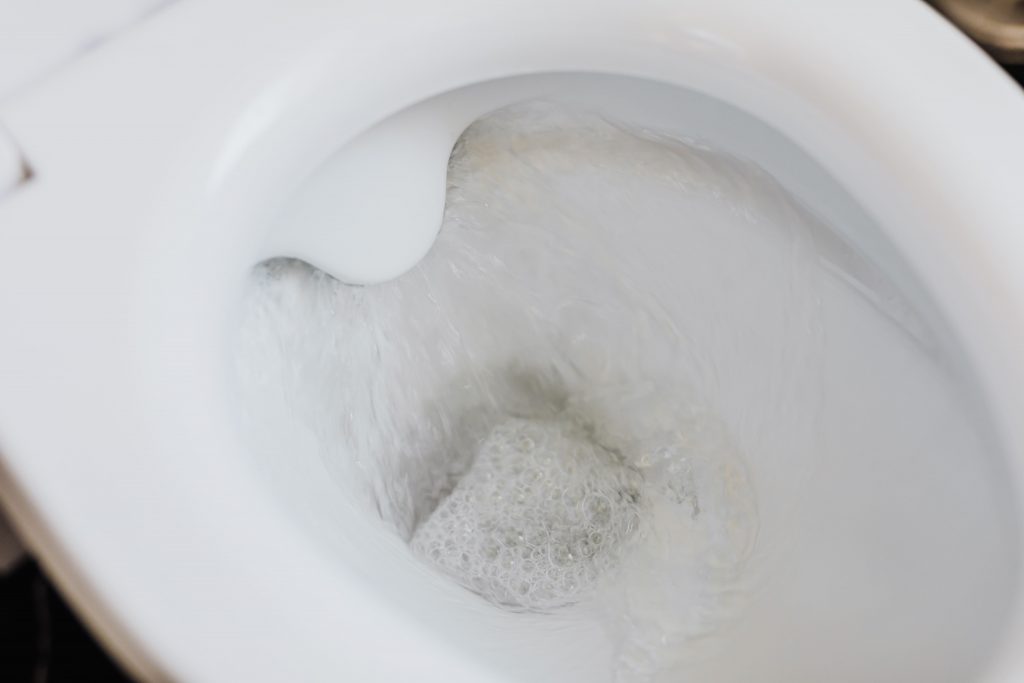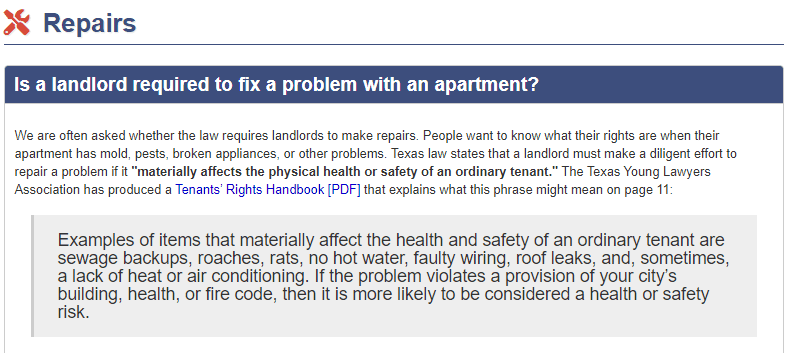
There are few more awkward situations than flushing a toilet and it not working. The commode is now not operable so nobody else can use it. Clearly you will want to get this fixed right away. When this happens in a rental property, it can be fuzzy who is responsible for clearing the blocked toilet.
A tenant is typically responsible for clearing a blocked toilet on a rental property. Often a clog is the result of the renter or their guest flushing something down the toilet that caused the issue. There are a few instances when a blockage is due to a fault in the pipe system when the landlord would be required to repair.
Landlords are responsible for maintaining a safe and habitable living environment for their tenants including ensuring that plumbing is in good working order. However, they are not always responsible for the repair.
| Tenant | Landlord |
| Too much toilet paper | Tree roots |
| Dropped something in bowl | Collapsed drain |
| Flushed something in bowl | Mud in line |
| Poured something in bowl | Worn flush mechanism |
| Damaged flush mechanism | Full septic tank |
What process should be used by the tenant to get the toilet cleared?
This is where it is important for a tenant to have a good understanding of their lease. In some situations, a landlord may require a phone call for any type of plumbing issue including a clogged toilet.
But most landlords would likely prefer the tenant to take some basic steps to resolve the issue before being contacted.
It shouldn’t be any different than other basic household maintenance items such as changing a light bulb or cleaning your windows.
If a lease does not stipulate otherwise, here are some steps a tenant can take to clear a toilet before contacting the landlord:
- Use a plunger – the first step a tenant could try is to use a plunger. Done properly this should clear the majority of problems.
- Wait then flush again – sometimes the blockage breaks down after absorbing water and will go away by flushing. Only try this if the water level is low or it can overflow the bowl causing other issues.
- Pour hot water and dishwashing liquid – this can help break down the blockage.
- Baking soda and vinegar – combine baking soda and some water and pour into the bowl. Wait a few minutes and add some vinegar. The chemical reaction might loosen the clog.
- Shop vac – if the clog was caused by a small toy or plastic, a heavy duty vac may suck it out.
- Toilet auger or snake – head over to the home depot and pick up a simple tool to clear the clog for about $25. This can loosen any debris that is further down the pipes.
- Contact landlord – if the tenant can’t get the clog cleared, then it is time to contact the landlord who may have experience in clearing clogs, contact a maintenance person, or call a plumber.
- Contact a plumber – if the landlord is not responsive, a tenant might consider contacting a plumber. However the tenant should expect to pay for the service.
Can a renter hire a plumber directly to clear a clogged toilet?
If a tenant is not able to clear a toilet clog themselves, the best thing to do is contact the landlord. Some landlords are very hands-on and can make repairs like this themselves. Many landlords have arrangements with a handyman who also could resolve the issue.
Should the issue turn out to be more than just a simple clog, the plumber will not be able to make a repair without the owner’s permission. Then the renter will have to pay for the service call and still not have the toilet repaired.
Only when a landlord specifically authorized a tenant to make small repairs themselves or when the landlord cannot be reached, should renters hire a plumber on their own. This might be a good idea when you know what is causing the clog such as an object that was dropped in the bowl.
How long does the landlord have to clear a clogged toilet?
The amount of time a landlord has to complete a repair varies by state. But most states allow a landlord to have a reasonable amount of time to make a repair once they have been notified.
How much time is reasonable depends on the severity of the problem. An issue that impacts the habitability of a rental or poses health and safety risks such as no heat or running water should be resolved quickly. This typically means within a few days but there is no specific timeline.
Other less-serious repairs may take longer. Some states allow up to 30 days for a non serious repair.
Many state such as California, New York and Texas consider sewer backups to materially affect the health and safety of an ordinary tenant.

Who actually pays a plumber for a clogged toilet?
A plumber will expect to get paid for the time, use of tools and skill to clear a clogged toilet. Unless other arrangements were made in advance, whoever contacts the plumber should expect to pay for that service.
While ultimately a landlord may pay the plumber and charge that fee back to the tenant, there is no need for them to get involved with a dispute between a property owner and renter.
Reasons a toilet may clog
Toilets get clogged all the time. Sometimes it is from too much toilet paper or poop. Other times things get dropped into the bowl and cause a blockage. Here is a list of some common issues that prevent a toilet from flushing properly:
- Disposable wipes
- Dental floss
- Paper towels
- Feminine products
- Cotton balls
- Pumice sponge
- Socks or clothes
- Bandages
- Syringes or needles
- Gum
- Toys
- Diapers
- Roots blocking pipe
- Pipe collapse
- Flush valve malfunction
What happens if the toilet continues to get clogged?
Sometimes a tenant may accept responsibility for a toilet clog but it happens again and again.
When this occurs, it would be a good idea for the tenant to discuss the matter with the landlord. It may be an issue with the flushing mechanism or piping system. Maybe the water level in the bowl is not set high enough.
A good landlord should try to investigate and rectify any underlying issues.
However, sometimes the building may just be older and there is not much that can be done. Or, equipment might need to be replaced that is very costly.
In this case, the tenant should consider if the inconvenience is worth living in the rental.
Can my landlord tell me what kind of toilet paper to buy?
Many rental properties have a septic system to get rid of waste. Certain types of toilet paper may fill the tanks, cause clogs or other damage to the system which can be expensive to resolve.
This is one case where a landlord can certainly restrict the type of paper used. The landlord should discuss this with a tenant prior to signing a lease.
Who is responsible if the property is a condo?
A condo or other complex may have multiple owners sharing a sewer line. In this case, the landlord and tenant would be responsible for issues caused inside the home. The condo association would typically be responsible for any blockages in the main waste pipes.
What if multiple toilets won’t flush?
Where there are multiple toilet bowls in a rental property that will not flush, or more than one toilet in a multi-unit home is not working, the issue is more likely to be with the plumbing system where a main line is blocked vs a clog caused by a tenant. The property manager should seek to have this repaired immediately.
Ideas for landlord to reduce calls for clogged toilets
Landlords who want to reduce the amount of calls they get for clogged toilets can take these proactive steps.
- Provide tenants with some basic equipment to help the plunge or clear the blockage on their own.
- Add a clause to the lease that tenants are responsible for any repairs under $100.
- Add a specific clause to the lease that indicates a charge for repair of any drain blockages.
- Provide tenants with contact information for an approved plumber or handyman to resolve any issues. Be clear who is responsible for any charges.
- Discuss with tenants how toilets typically get clogged with examples and explain the consequence if they cause a blockage.
Most of the time a clogged toilet is caused by a tenant. By educating them on the common causes and providing them with directions or equipment, renters will be less likely to be surprised when their toiled does get clogged.
